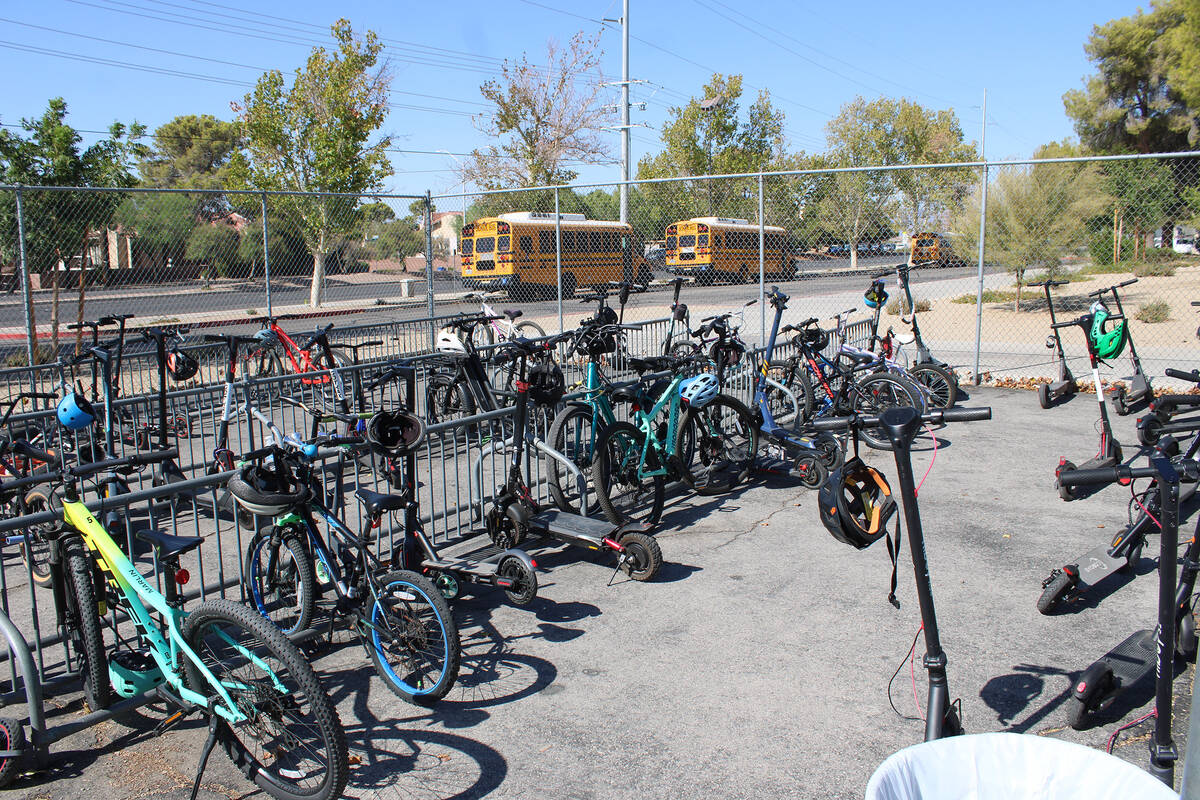
With a couple of significant amendments, the city council voted unanimously to pass an ordinance regulating the use of e-bikes and e-scooters in Boulder City. The ordinance passed unanimously Tuesday and will take effect on Sept. 18.
The bill adds definitions for bicycles, electric bicycles, electric scooters, roller skates, scooters and skateboards; requires helmets in all circumstances for minors; establishes speed limits for the operation of these devices on sidewalks, trails, and paths and limits some devices from operating on sidewalks in certain areas.
The ordinance will: Amend city code to establish a speed limit of 15 miles per hour for all devices operating on the sidewalk, including bicycles, e-bikes, roller skates and both electric and manual scooters.
Requires a helmet at all times for minors riding bicycles, electric bicycles and electric scooters.
Recommends that a rider use a designated path for bicycles, electric bicycles, or electric scooters when such a path has been provided adjacent to a roadway.
Prohibits the parking of an electric bicycle, or an electric scooter in a manner that obstructs pedestrian or road traffic.
The amendment referenced earlier is about use of these devices on sidewalks. The original text would have prohibited the engagement of the motor on any sidewalk, public path or trail. The amended version removes that prohibition and establishes a 15 mph speed limit on sidewalks and paths.
It also adds non-motorized scooters to city code and prohibits their use on roadways and, instead, requiring their operation to occur on sidewalks or similar paths, and giving them the status of pedestrians while in crossing areas similar to individuals on roller skates or skateboards under current code.
There is a major exception to the sidewalk rule. They can’t be ridden on sidewalks, or “other paths contiguous and adjacent to the public access of buildings in use for commercial or industrial purposes, including, but not limited to, shops, restaurants, hotels, banks or office buildings, and public buildings.” In those areas, all bikes, scooters skateboards, etc —motorized or not —are to be walked.
“When you say, get off and walk your device, because people had a lot of questions about this, does that mean I can’t go to the bank?” asked Councilwoman Sherri Jorgensen. “That isn’t what this is intended for, correct?”
“This is intended to address riding the devices in front of those access points for businesses,” answered City Attorney Brittany Walker. “So we’re not saying don’t visit downtown businesses on your bike. We’re saying, walk your device.”
Fines for violations are civil traffic infractions and are proposed at $150 for the first violation, $250 for the second, and $600 for the third and subsequent violations, and, parents will be financially responsible for tickets given to minors.
Councilman Steve Walton expressed some discomfort with the amount of the fines, but admitted they are a necessity.
“Generally, we have the education, engineering and enforcement. I couldn’t agree more than education. I went to multiple bicycle rodeos as a youth. Engineering, I think, would be the signage around town. And then if enforcement becomes necessary, then so be it,” he said.
The step does not appear to have been taken lightly. As covered in last week’s edition of the Review, there have been numerous collisions and near misses in town recently.
Walker summed it up. “According to U.S. Consumer Product Safety Commission, electric bicycle and scooter injuries have increased 20% each year since 2017. And as we’ve all seen in our community, these devices are growing in popularity, especially with teens, commuting to school on these devices. And police get several calls a month from concerned residents.”
Police Chief Tim Shea clarified that and said, “Injuries increased by 20% between ‘17 and ‘18. And then they went up by another 20% between ‘18 and ‘19.” This means that reported injuries are up by more than 200% in seven years.
There are additional limitations to use of these devices in the city’s parks.
“It prohibits the riding of motorized forms of transportation, including e-bikes and scooters, upon any recreational facility, in city parks, such as grass, fields, playgrounds, recreational courts, etc.,” Walker outlined. “We’re not trying to eliminate their ability to operate within our parks. We’re just saying, they shouldn’t be in the grass. They shouldn’t be on playgrounds or on pickleball courts or basketball courts.”
Walker reiterated several times that not all e-bikes and scooters are the same in the eyes of the law. And it’s mostly about their top speed.
“The definitions for e-bikes are taken from state law,” she explained. “And then an electric scooter is defined by state law as a vehicle with handlebars and an electric motor designed to be ridden in an upright or seated position. And the electric scooter does not include those designed for use by individuals with disabilities. So we’re not intending to capture the ADA scooters in our definition of an electric scooter. Those are addressed already in state law.”
“I want to briefly go over mopeds and motorcycles,” Walker continued. “This bill is not an attempt to address mopeds and motorcycles. Those are already addressed in state law. And importantly, the distinction is how fast these vehicles go. Some of these e-bikes and even e-scooters can go far faster than 20 miles per hour. At that point, that device is no longer an electric scooter or an electric bicycle. ” She clarified that an e-bike can go as fast as 28 mph but only when the rider is moving the pedals.
“We’re having kids running into sides of cars because they can’t control these,” Shea said. “And some of the ones that they’re riding are not bicycles. They are electric motorcycles. They were manufactured for off-road use, and they’ll go up to 60 miles an hour. And a 12-year-old can’t handle that.”